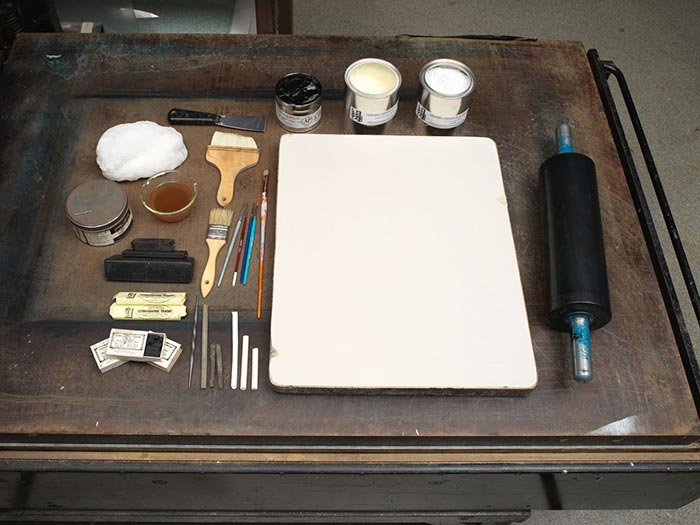A Jolly Jumper: "Come along Bismark. I bet you don't got me left."
Publisher Currier & Ives American
Not on view
In this scene at left, a man with red hair and mustache leaps from a pier to the deck of a departing ferry boat. His determined jump has caused his hat to fly off, the bottom of his blue coat to fly behind him, and eggs to fall from the basket he holds in his upraised right hand. The man's left hand pulls a rope attached around the neck of a brown dog (center), named "Bismark" (according to the caption), harnessed to a small wooden cart with a baby as its passenger.The dog has stopped short at the edge of the pier, knowing it is unable to jump over the water to reach the ferry.The man is oblivious to the dog's dilemma. Approaching from the right, an alarmed dark-haired woman (wearing a yellow blouse with green polka dots and a green skirt) runs with outstretched arms towards the wide-eyed infant seated in the cart. In the central middleground, a man (wearing a dark brimmed hat, a dark vest over a white shirt with red polka dots, and dark pants) stands near the pier's chain-hoisting wheel and reaches for the long rescue hook hanging on the building wall behind him. He is anticipating the dog and baby's unwanted plunge into the water. The title and caption are imprinted in the bottom margin of this print. The companion and sequel print --titled "A Sorry Dog: "I shoots dot tog Bismark. He makes me much troubles." (Peters 492; Gale 6024; Metropolitan Museum of Art accession no. 52.632.161)-- shows that the "Jolly Jumper" wrongly blames his innocent dog of wrecklessness. .
The man's fair-colored hair and whiskers, along with the dog's name of Bismark* [sic], suggest that the "Jolly Jumper" is probably a German immigrant. In the 1880s, a large influx of Germans arrived in New York City. Some sought more abundant farm land elsewhere or more job opportunities in industry, as well as more political rights -- these being in limited supply in Germany as its population grew. Some prints by Currier & Ives depict ethnic or immigrant stereotypes that are offensive and disturbing, although such prints were made and sold as "comic" subjects. The Metropolitan Museum of Art preserves such works to shed light on their historical context and to enable the study and evaluation of issues of immigration and prejudice.
Nathaniel Currier, whose successful New York-based lithography firm began in 1835, produced thousands of prints in various sizes that together create a vivid panorama of mid-to-late nineteenth century American life and its history. People eagerly acquired such lithographs featuring picturesque scenery, rural and city views, ships, railroads, portraits, hunting and fishing scenes, domestic life and numerous other subjects, as an inexpensive way to decorate their homes or business establishments. As the firm expanded, Nathaniel included his younger brother Charles in the business. In 1857, James Merritt Ives (the firm's accountant since 1852 and Charles's brother-in-law) was made a business partner; subsequently renamed Currier & Ives, the firm continued until 1907.
*Otto von Bismarck, a Prussian statesman responsible for the unification of Germany, was Chancellor of the German Empire from March 21, 1871 to March 20, 1890.

